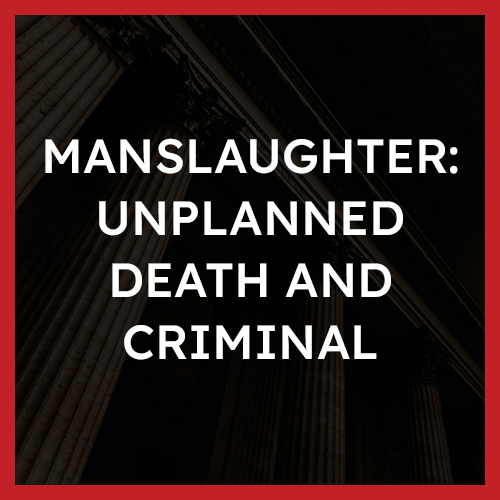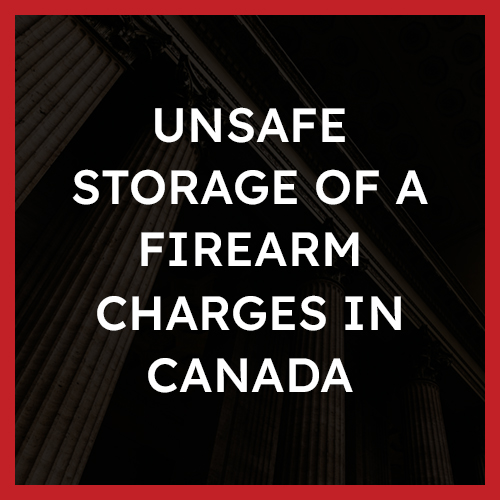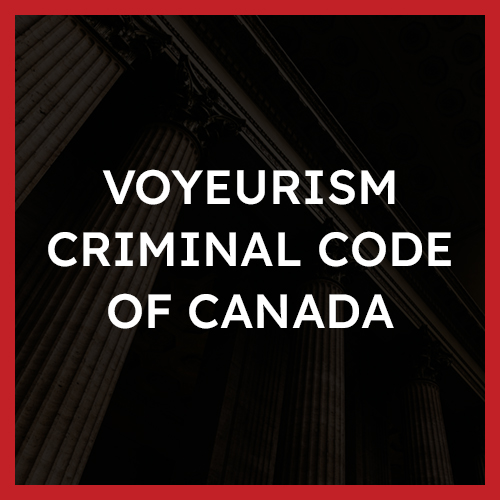Manslaughter: Unplanned Death and Criminal Negligence
What is Manslaughter?

Section 222, 229, 231, 234, and 236 of the Criminal Code:
- Section 222: Homicide
- Section 229: Murder
- Section 231: Second degree murder
- Section 234: Manslaughter
What is needed to convict a person of manslaughter?
As always, to earn a conviction, the Crown is tasked with proving both the mens rea (mental intent) elements and the actus reus (the existence of the actual act) of the offence. Alike first-degree and second-degree murder, the actus reus requires the Crown to prove causation. In other words, the accused’s act must have caused the victim’s death or been a “significant contributing cause of death beyond something trifling or minor” (see: R v Smithers, 1977 CanLII 7 (SCC); 1 SCR 506). As discussed above, the accused commits manslaughter where he or she causes the victim’s death by (a) means of an unlawful act; (b) criminal negligence; (c) causing that human being, by threats or fear of violence or by deception, to do anything that causes his death; or (d) wilfully frightening that human being, in the case of a child or sick person.
Unlike murder, manslaughter uses an objective test to determine whether someone has committed manslaughter. The Crown must prove that act was “objectively dangerous, [and] that [it] is likely to injure another person” (see: R v Creighton, 1993 CanLII 61 (SCC), [1993] 3 SCR 3). The test, as laid out in R v Desousa, 1992 CanLII 80 (SCC), [1992] 2 SCR 944, and requires “objective foreseeability of the risk of bodily harm which is neither trivial nor transitory, in the context of a dangerous act”. Nevertheless, the foreseeability of death does not need to be established in the context of manslaughter (see: R v Creighton, 1993 CanLII 61 (SCC), [1993] 3 SCR 3).
What type of offence is manslaughter?
Manslaughter is what we refer to as a “straight indictable offence”. Straight indictable offences are relatively rare because they are reserved for the most serious types of Criminal Code offences. In Canadian criminal law, there are three classifications of criminal offences: indictable, summary and hybrid. Indictable offences are the more serious category of criminal offences and summary offences are the ‘less’ serious category of criminal offences. Hybrid offences are election-based meaning that the Crown will decide whether to proceed via indictment or as a summary charge after reviewing evidence. The Crown’s election relies on several factors such as whether the accused has a criminal record or history, the circumstances surrounding the offence, precedent, etc.
Examples
Some examples of manslaughter could be:
- A parent fails to provide the necessaries of life and their child therefore, dies (i.e., the parent fails to provide proper nutrition, shelter, fails to obtain proper medical attention for the child when ill, etc.).
- Driving recklessly and killing another driver or passenger.
- Careless use of a firearm resulting in someone’s death.
Defences
The availability and strength of any defence depends entirely on the specific facts of one’s case. However, the following are some frequently referenced or frequently asked-about defences that may be used when fighting a manslaughter charge:
Causation
Fact permitting, a strong defence can be calling into question the notion that the accused’s actions caused the victim’s death. This is part of the actus reus element of the offence discussed in more detail here. The accused’s act must have caused the victim’s death or been a “significant contributing cause of death beyond something trifling or minor” (see: R v Smithers, 1977 CanLII 7 (SCC); 1 SCR 506). Where there is an intervening cause of death or it cannot be proven that the accused’s actions were contributory, not all elements of the offence can be made out and therefore, a conviction cannot be entered.
Identity
There are several aspects to this defence, however, one may rely on whether there was evidence seized by the police, which directly implicates the accused. The accused’s identity, as well as the date, time, and location of the offence, are necessary for the Crown to prove the offence beyond a reasonable doubt. If it is unclear that the victim died at the hands of the accused him/herself, the Crown is responsible for proving this and, if the Crown fails to do so, the accused cannot be convicted.
Self-defence
Self-defence is an available defence to a homicide charge. The defence is statutorily embedded in the Criminal Code under section 34. Section 34(1) says that:
(1) A person is not guilty of an offence if
-
- (a)they believe on reasonable grounds that force is being used against them or another person or that a threat of force is being made against them or another person;
- (b)the act that constitutes the offence is committed for the purpose of defending or protecting themselves or the other person from that use or threat of force; and
- (c)the act committed is reasonable in the circumstances.
Self-defence is a full justification for murder. It is to be considered in situations of “last resort” where a jury would accept that “the accused believed, on reasonable grounds, that his own safety and survival depended on killing the victim at that moment” (see: R v Cinous, 2002 SCC 29, [2002] 2 SCR 3).
Applicable Charter Defences
The Canadian Charter sets out your rights and freedoms before and after your arrest. If the police fail to abide by these rights, either deliberately or inadvertently, it could aid in your defence. If any of your Charter rights have been violated before or after your arrest, you may be able to have some or all of the evidence that the Crown is relying on to secure a conviction excluded under s. 24(2) of the Charter.
Punishments
Manslaughter unlike murder, is more discretionary at sentencing. While murder (both first-degree and second-degree) carry automatic life sentences, a manslaughter conviction has no minimum mandatory sentence (unless manslaughter is carried out with a firearm) leaving prospective sentences in the hands of the court. This is often why a defence lawyer will sometimes try to show that a murder charge should be prosecuted as manslaughter because sentencing has more potential to be tailorable and therefore, to fit the circumstances surrounding the offence and the offender. See manslaughter sentences and parole eligibility outlined in the table below:
| Offence | Minimum Term of Imprisonment | Parole Eligibility |
| Manslaughter with a firearm | 4 years (see: section 236(a)) | The court may vary parole eligibility up to one-half of the sentence or 10 years, whichever is less (see: section 743.6) |
| Manslaughter | No minimum (see: section 236(b)) | N/A |
Additionally, after a conviction of manslaughter, the court must: make an order for the taking of samples for the DNA databank: (see: section 487.051(1) of the Criminal Code); enforce a firearm prohibition in accordance with section 109 of the Criminal Code; compel weapons used in the commission of the offence for forfeiture (see: section 491 of the Criminal Code). The court may also place bans on communicating with witnesses/victims and/or implement a victim surcharge fine.
Frequently Asked Questions
What is manslaughter in Canada?
Manslaughter is a catch-all for all non-murderous yet culpable homicides (s. 222(5) of the Criminal Code outlines what constitutes “culpable homicide”). One might be found guilty of manslaughter when they cause someone’s death, regardless of their intention as long as the outcome was reasonably foreseeable. If the intent (mens rea) elements of murder cannot be proven (in other words, the accused did not intend to cause the victim’s death), but the accused still causes his death by (a) means of an unlawful act; (b) criminal negligence; (c) causing that human being, by threats or fear of violence or by deception, to do anything that causes his death; or (d) wilfully frightening that human being, in the case of a child or sick person, then they have committed manslaughter.
What is the punishment for manslaughter in Canada?
Unless committed with a firearm, the punishment for manslaughter can range anywhere from probation to life imprisonment. Manslaughter can capture an array of acts and therefore requires a flexible sentencing approach. Case law (past precedents) as well as s. 718 of the Criminal Code largely influence sentencing. If manslaughter is committed with the use of a firearm, the Criminal Code does mandate a minimum sentence of 4 years imprisonment. However, besides this, the court is open to imposing a tailored sentence with appreciation for circumstances surrounding the offence, the offender and society at large. A defence lawyer will be able to tell you, based on the facts of your case and the evidence against you, what sentences have been imposed in the past for offences similar to yours. For more on manslaughter punishment, see here.
Why is it called manslaughter?
The phrase manslaughter is often used in most jurisdictions to differentiate the different types of homicide. Because manslaughter is not murder within the Criminal Code, separating the classification of different types of homicidal offences separates also the stigma associated with the different acts. Manslaughter, for example, is ‘less culpable’ than murder, therefore, the distinction is important for both the offender and society to note that those found guilty of manslaughter vs murder aren’t as morally culpable. The term manslaughter is Old English and as described by the Online Etymology Dictionary, “differs from murder in not proceeding from malice, prepense or deliberat[ion], which is essential to constitute murder”.
Published Decisions
R v Strathdee, 2021 SCC 40 (CanLII)
The accused and others were involved in an altercation in an apartment during which four occupants were stabbed, one of whom died. The accused joined an attack which, as the court found, had a common purpose to assault the occupants, but the trial judge was unable to determine who inflicted various stab wounds which ultimately killed the deceased. The accused was acquitted of second-degree murder and manslaughter and convicted of aggravated assault. The Crown successfully appealed, and the accused was convicted of manslaughter. The Court of Appeal found that the accused’s participation in the group assault as a member of the attacking group in pursuit of a common purpose met the actus reus requirement of manslaughter, and he would have foreseen at least the risk of bodily harm to the deceased as a result of his participation. The accused appealed to the Supreme Court of Canada (SCC), however, the appeal was dismissed. The SCC determined that triers of fact on charges of manslaughter, should focus on whether the accused’s intentions were a significant contributing cause of death, and in the context of group assaults, actions of all assailants can contribute significant contributing cause to all injuries sustained.
You can read the full case here.
R v Javanmardi, 2019 SCC 54 (CanLII), [2019] 4 SCR 3
The accused was a naturopath who administered nutrients by way of an intravenous injection to the victim (her patient). The nutrient solution for the intravenous injection was prepared from separate vials that turned out to be contaminated. The patient reacted negatively almost immediately and died of endotoxic shock some hours later. The accused was arrested and charged with criminal negligence causing death and manslaughter. The trial judge was satisfied that the accused had the required skills to administer intravenous injections, followed required protocols and took sufficient precautions. Based on these findings, the trial judge acquitted the accused of both charges. The Crown appealed and the Provincial Court of Appeal set aside both acquittals and substituted a conviction on the charge of manslaughter. The accused appealed to the Supreme Court of Canada where the accused’s acquittals were upheld, and the decision of the Court of Appeal was overturned.
You can read the full case here.
R v Araya, 2015 SCC 11(CanLII), [2015] 1 SCR 581
The victim and some friends were socializing in a park when a group of men entered the park and attempted to rob some of them and the victim was shot and killed. Eyewitnesses provided only a general description of the assailants. The accused confessed to his teacher that he was present at the shooting but did not fire the gun. The trial judge admitted two photographs of the accused to allow the jury to consider whether the accused had any of the physical attributes described by the eyewitnesses. On this evidence, the accused was convicted of manslaughter and sentenced to eight years in prison. The Court of Appeal allowed the accused’s appeal, stating that the trial judge erred in his instruction on the photographs to the jury. The Crown appealed to the Supreme Court of Canada (SCC) where the conviction for manslaughter was restored. The SCC found that there was no reason to disturb the trial judge’s finding that the photographs were admissible because they were relevant to the question of whether the accused’s appearance at the time of the shooting fit within the general descriptions provided by the eyewitnesses and the photographs had probative value, given that the identity of the accused was a key issue in the case. Additionally, the probative value of the photographs outweighed their prejudicial effect.
You can read the full case here.
About The Author
Ask A Question
We endeavor to respond to questions within 24 hours. If your matter is urgent, please call our office or submit a request for a free consultation.







